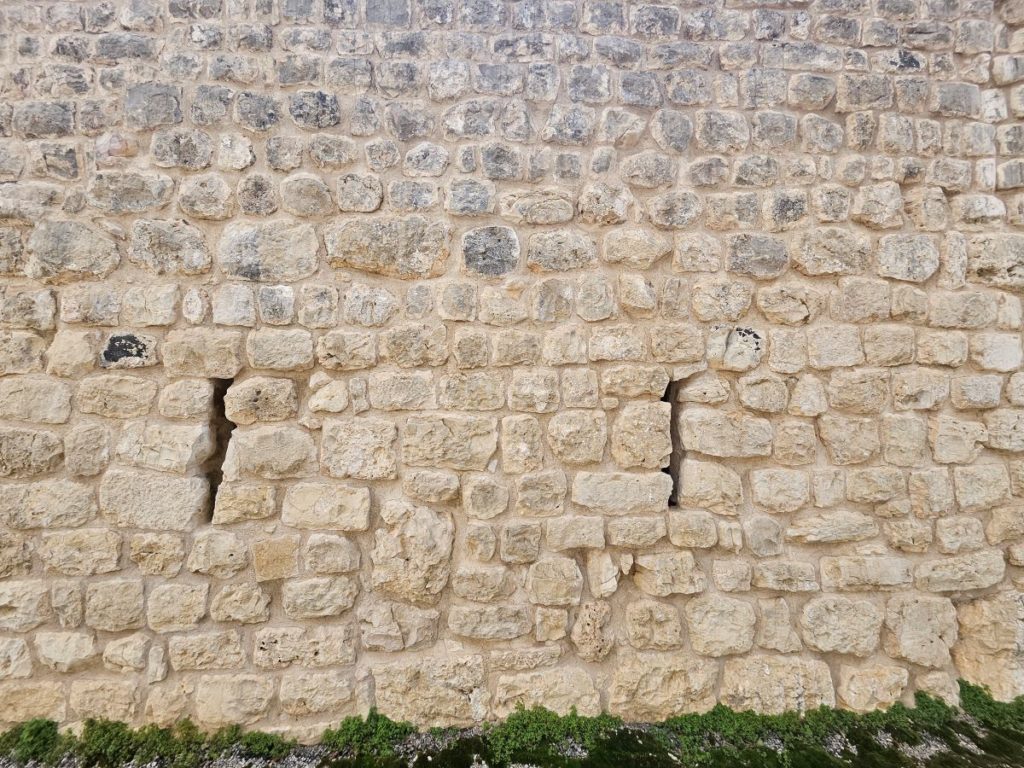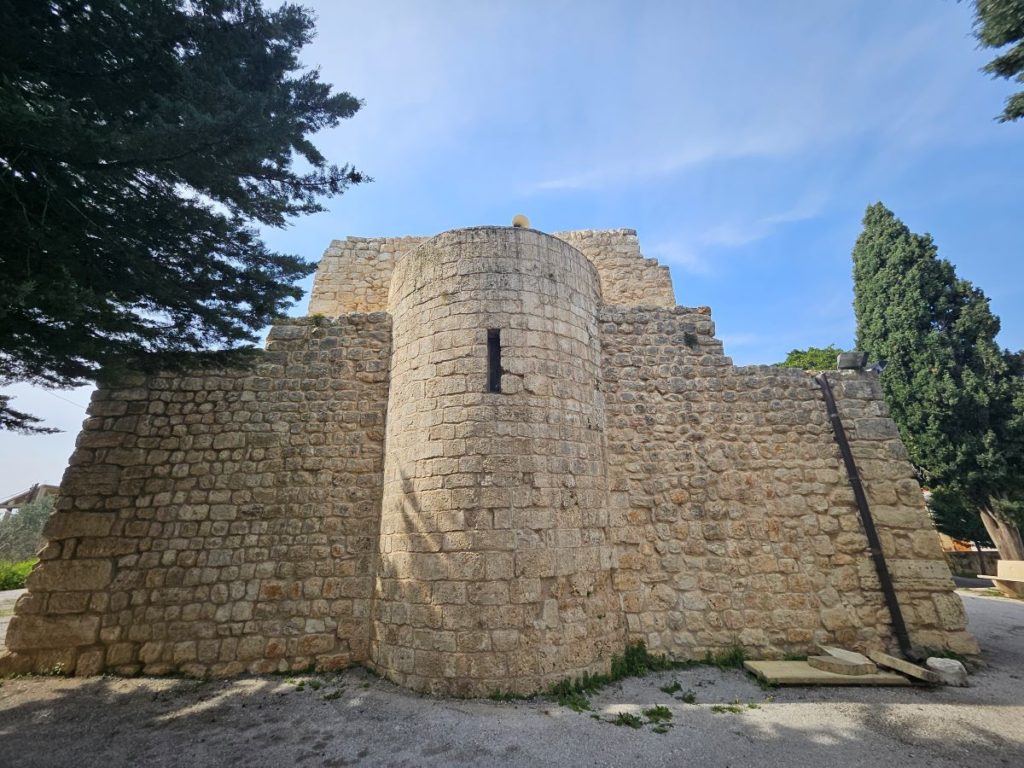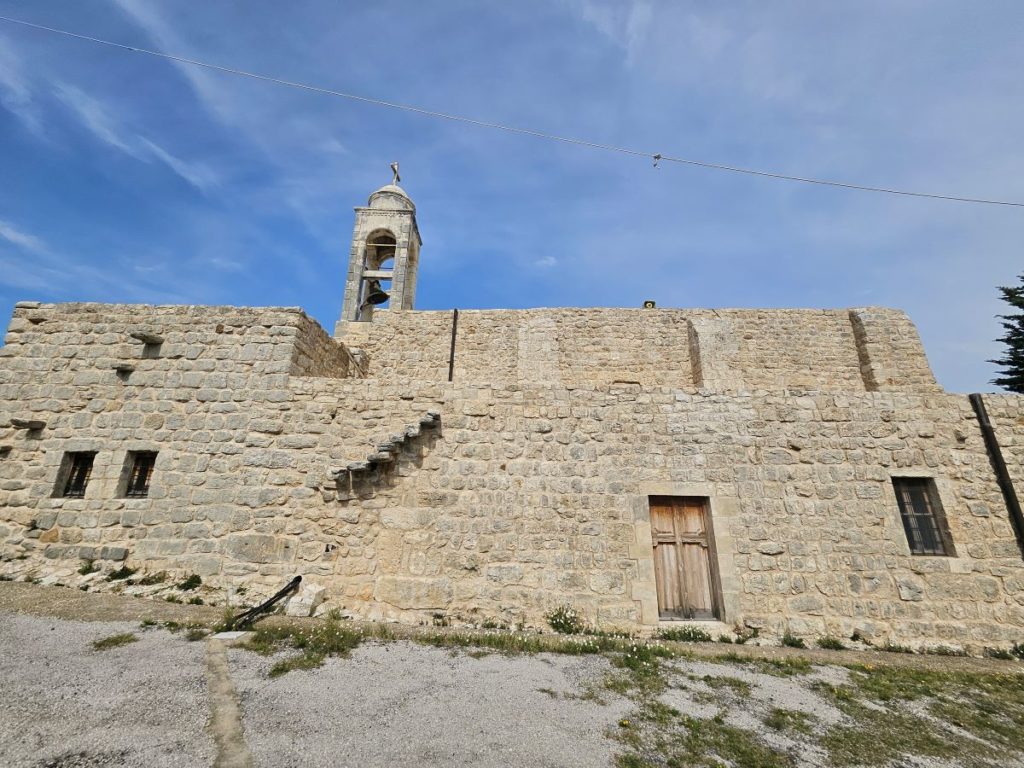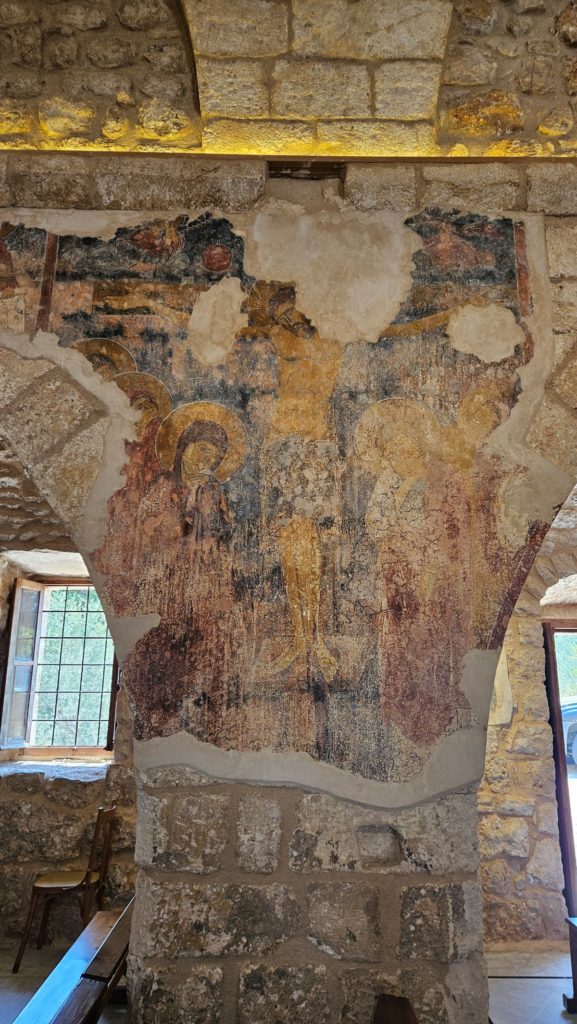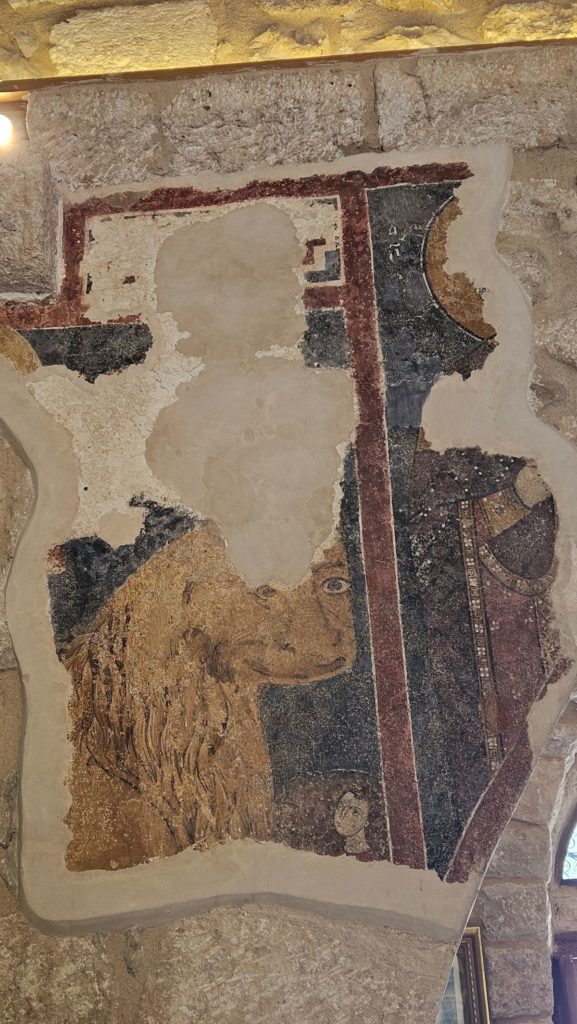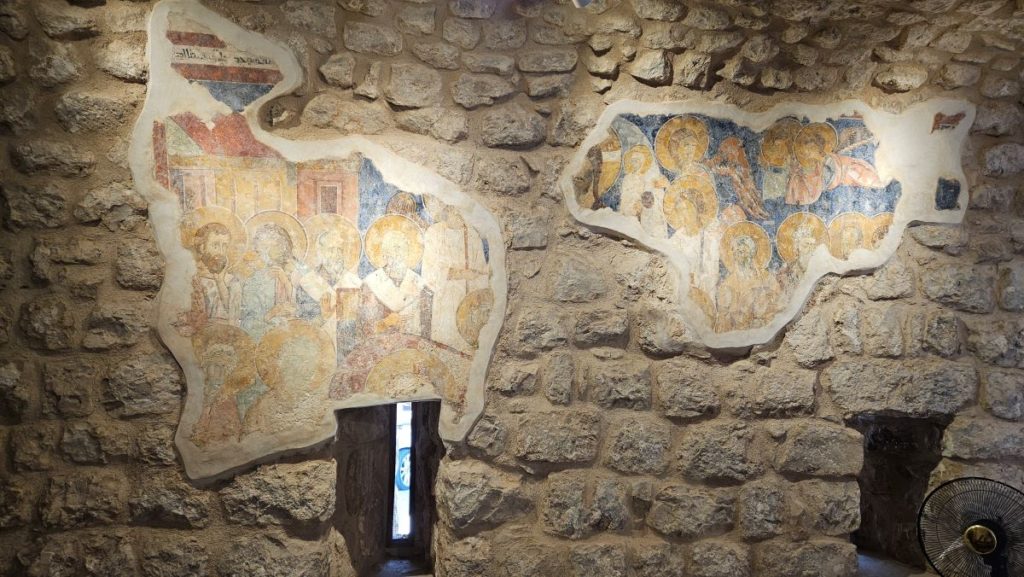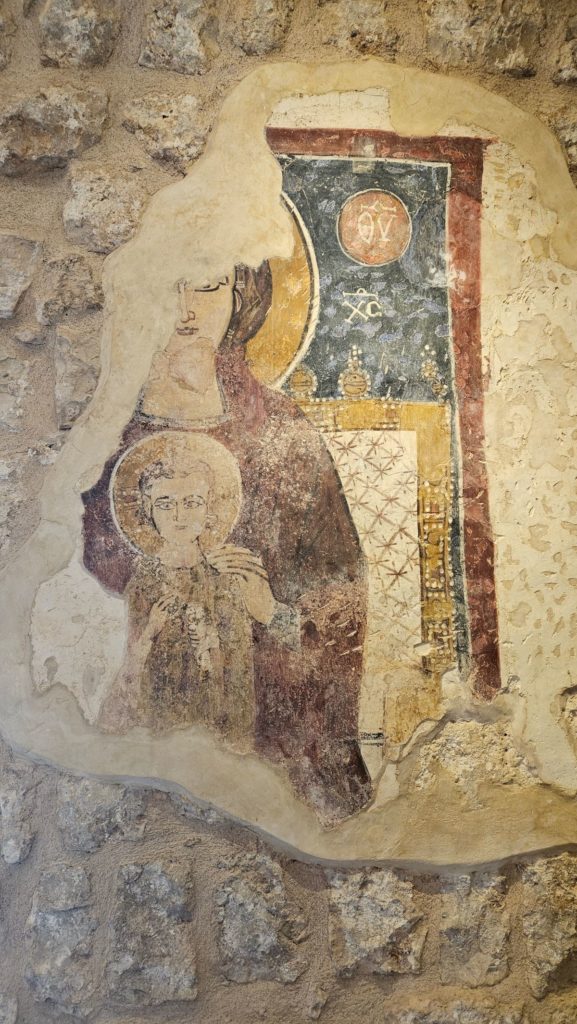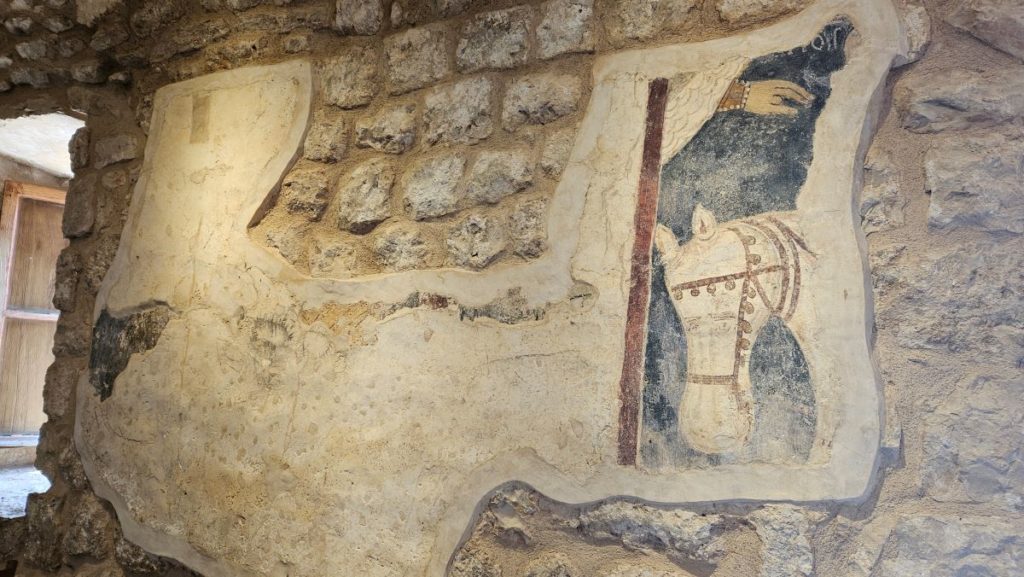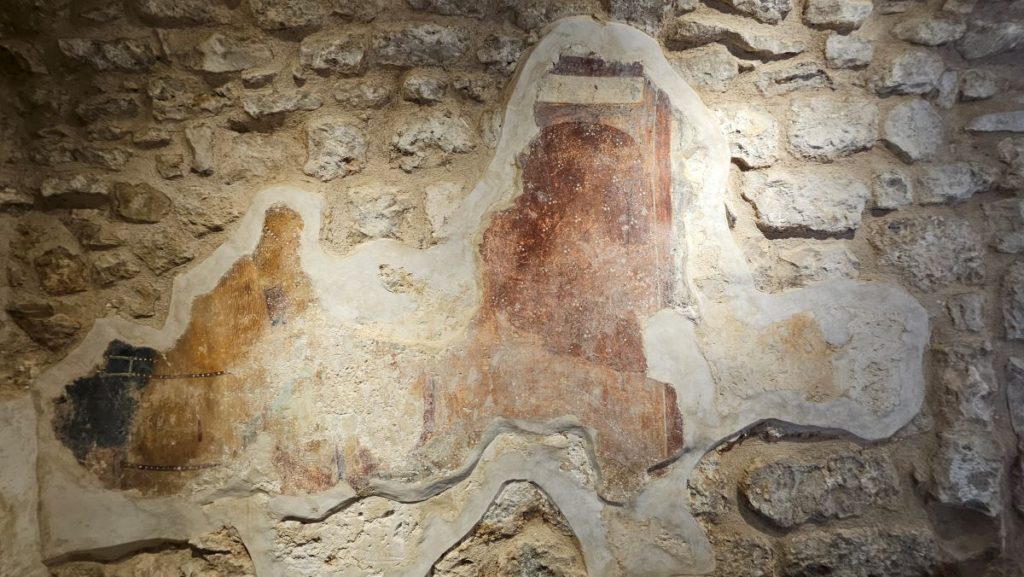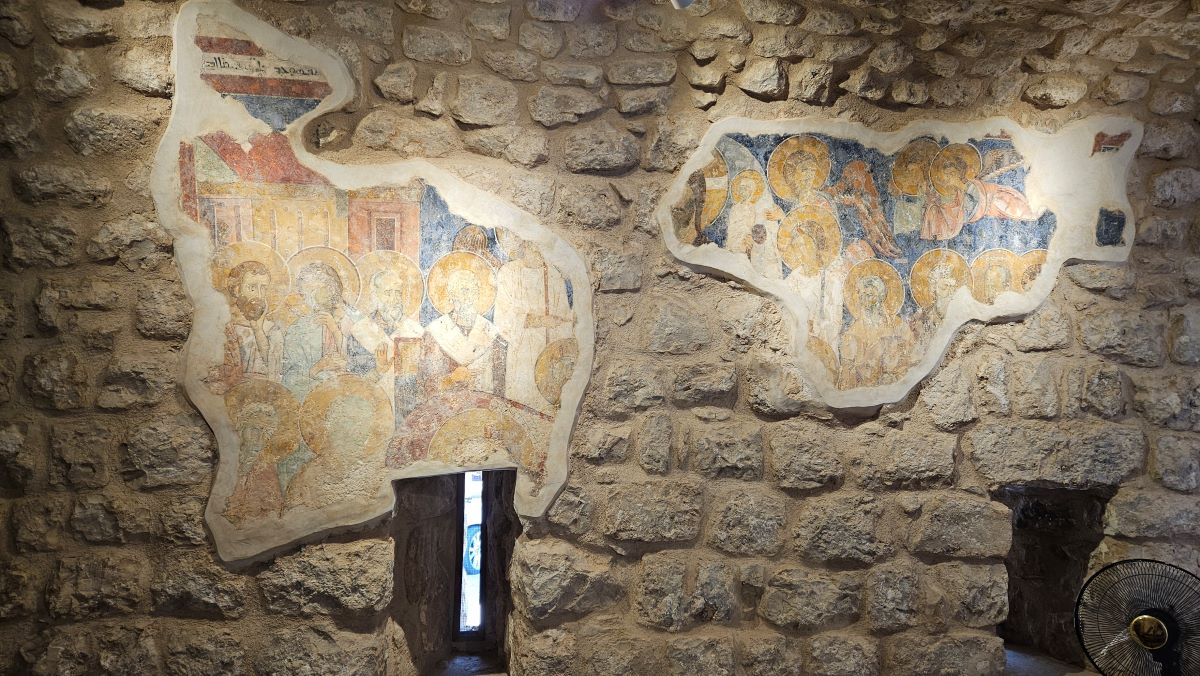The Crusader-era church of Saint Saba, Edde, showcases a basilica layout with three naves and a prominent central apse, dating from the late 11th to early 12th century.
Structure
Exhibiting a combination of Romanesque and local Levantine features, typical of Crusader-era constructions, the church’s design includes pointed arches, massive square pillars, and heavy ribbed vaults that illuminate the central nave while the side aisles remain darker. Its thick exterior walls and narrow arrow slits impart a fortified appearance.
Frescoes
Originally adorned with frescoes, the church now only has remnants of these artworks. The preserved frescoes include a Crucifixion scene and a Dormition of the Virgin.
The Crucifixion is set against a blue background with red framing, depicting Christ with a light blue veil, surrounded by mourning figures and angels. The style, characterized by elongated figures and intense emotional expressions, reflects late Komnenian art, showing Byzantine influences with a unique, localized twist.
The Dormition features a central depiction of Christ lifting the Virgin’s soul, surrounded by apostles and bishops. The figures in this scene exhibit pronounced Byzantine traits, such as long faces and almond-shaped eyes, but with a simplification that points to an oriental influence.
Some frescoes, attributed to a later phase around 1264, are found on the north and south walls, depicting horsemen saints and a Virgin and Child. These later frescoes, though damaged, display a stylistic shift towards a more local Syrian approach seen in contemporaneous works like those from Behdidat church. The style of these frescoes is simpler and more schematic compared to the earlier Byzantine-influenced works, emphasizing a distinct regional tradition and reflecting the evolving artistic landscape in the region, bridging Byzantine art with local stylistic elements.
Karim Sokhn
Tour Operator & Tour Guide
References:
L’Eglise De Saint Saba a Edde Batroun, Nada HELOU

